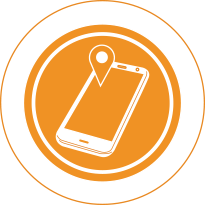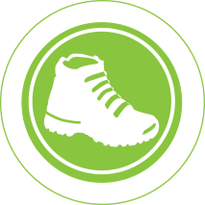Andrew’s bloggage update: Created a video of some of the cool Wikimedia Atlas of European maps. Downloaded the images, rubber sheeted them and composited each map sheet in YouTube - if you squint you’ll see the four red dots I used as projection reference. This is a useful skill as crowd-sourcing emerges as a tool for good, be it for HOT Nepal maps for earthquake relief, or to geo-reference some of the million British Library maps.
Recent Posts
FOSS4G-Europe : Mapping parties, workshops & keynotes
The second edition of the FOSS4G-Europe Conference will be held at Politecnico di Milano in Como, Italy, from July 15th to 17th. The Conference aims to bring together FOSS4G users and developers worldwide and foster closer interactions with and amongst European communities in order to share ideas for improving geodata, software and applications openess.
This week FOSS4G-Europe announced its Mapping parties, updated list of workshops and 2 new keynotes speakers.
 |
 |
 |
 |
- OpenStreetMap mapping party
- Indoor mapping party
- Land coverage validation game
- Emotional mapping
- Raster and vector processing with GDAL
- How to write a Python GRASS GIS 7 addon
- Analysis with QGIS
- Land cover mapping with high resolution satellite images using Orfeo Toolbox, QGIS and OSM
- R for spatial data
- Free and open source software for kinematic GNSS positioning
- Deploying Web Processing Services using ZOO-Project - Examples Python WPS using PgRouting
- GeoServer on steroids: getting the best out of GeoServer
- Geopaparazzi: never out of data in the field
- FOSS4G routing with pgRouting, OpenStreetMap and OpenLayers 3
- Spatio-temporal Big Data: the Rasdaman approach in the context of the PublicaMundi project
- SensorWeb and IoT with OpenSensorHub
3. Keynotes
Here ar the two new keynotes speakers:
- Jeff McKenna, President, OSGEO Foundation
- Jun Chen, President, International Society of Photogrammetry and Remote Sensing
As a reminder here are the previously announced:
Alessandro Annoni, Head of Digital Earth and Reference Data Unit, European Commission’s Joint Research Center
Georg Gartner, President, International Cartographic Association
Patrick Hogan, NASA World Wind Project Manager, NASA
Ki Joune Li, Professor, Pusan National University
Batch Geonews: Centimeters GNSS Accuracy from Smartphones, Google Maps + StreetView in Legos, Google Earth in VR, and much more
Here’s the recent geonews in batch mode.
From the open source / open data front:
- Popular nowadays, Considering a Hybrid Proprietary/Open-Source Architecture
- Here’s a followup regarding the Open Letter for LiDAR standards, for which Esri’s Jack Dangermond himself provided feedback
- With the open source GeoMesa that is almost ready for release, Google & GeoServer Support Geospatial Big Data in the Cloud
- Nice QGIS effect, Trajectory animations with fadeout effect
- A GUI can’t hurt, Web-based configuration for MapProxy
- Second edition is available, PostGIS In Action 2nd Fresh off the presses
From the Esri front:
- Updated data, U.S. Esri Demographic data is now available
- Drive your city, CityEngine .0 released
- We never mentioned that product before, Esri Maps for IBM Cognos 6.0.2 Released
- We mentioned the Nepal crisis quite a few times, but not the efforts from Esri yet, there you go! Maps and Imagery of the Nepal Earthquake
From the Google front:
- A kid’s dream, Google Maps in Lego form & Brick Street View
- That’s cool too, Wearality, Bringing Google Earth to VR
- There’s New Street View in Madagascar and Canadian Parks
- Expect this feature widely available soon, Google Maps now allows sending directions from computer to app
- The normal difficulties of crowdsourcing, Google Maps Edits Cause Embarrassment, Android peeing on Apple
- Why not, The Planet Mercury in Google Earth
- It’s back, Place IDs in the Google Geocoding API
- And oh, there was a minor bugfix release - the first update in 2 years!, New Version of Google Earth 7.1.4.1529
Discussed over Slashdot:
- Under the sun, Interactive Map Exposes the World’s Most Murderous Places
- We knew this already, Uber Wants To Buy Nokia’s Mapping Services
- They follow you until they deliver, Amazon’s Delivery Drones Will Be Able To Track Your Location
- Global village, Europe Vows To Get Rid of Geo-Blocking
- Again, in the US, Police Can Obtain Cellphone Location Records Without a Warrant
- The police in your hands, Traffic App Waze To Alert L.A. Drivers of Kidnappings and Hit-and-Runs
- 3D soon everywhere, Intel Showcases RealSense 3D Camera Applications and Technologies In New York
- Everywhere really, Microsoft Integrates Autodesk’s 3D Printing Platform Spark Into Windows 10
In the everything-else category:
- Article on significantly improving smartphone’s GNSS accuracy to centimeters, Accuracy in the Palm of Your Hand (also discussed over Slashdot)
- HoloLens for architecture, engineering and construction, Trimble and Microsoft Hololens to the AEC industry
- It’s third year, first time I hear about it, the World Geospatial Developers Conference, with 6000+ attendees
- In time of crisis, How Satellites Can Monitor California’s Underground Water
- Understanding crisis, What Satellite Data Tells Us About Nepal’s Brutal Quake and don’t forget interferometry, Nepal earthquake deformations
- Satellites everywhere, Nanosatellite and microsatellite market forecast to reach $2 billion by
- New WorldDEM global DEM at high resolution, but it’s not cheap
- Self-driving cars: incremental or sudden change? It may well be incremental according to this interesting Wired article, while the next one is discussed over Slashdot, Self-Driving Cars In California: 4 Out of 48 Have Accidents, None Their Fault
- Location and the Internet of Things, Google’s Physical Web vs Apple’s iBeacon, and it appears Twitter invests in iBeacons
- What can be done with a smartwatch and location, 10 best location-based apps for Apple Watch
- Interesting from the OGC, Linked data versus geospatial semantics: Where do you stand?
- In recent releases (via VS), Geomatica released and FME .1
In the maps category:
- Beautiful and alarming at the same time, NASA visualizes the year of Earth’s CO2 emissions
- Historical maps in the US, It Just Got Easier to See a Cool Historical Maps Collection
OpenLayers 3.5.0 Released
The popular open source web mapping library OpenLayers 3.5.0 has been released.
Some of the new features according to the official blog: “Among the features in this release is a new snapping interaction. This can be used in conjunction with the draw and modify interactions to allow vector editing with snapping support. See the new snap example for a demonstration of its use. Adding to OpenLayers’ already excellent vector rendering and editing support, the Canvas renderer now supports a wrapX property on vector sources. Those in the mapping world have long known that the world is flat. But it is less common to accept that our flat world only has north and south edges while extending infinitely east and west. The wrapX property on vector sources (true by default) indicates that features will be rendered repeatedly as users pan east or west of the dateline. As if snapping and wrapping weren’t enough new vector functionality, the draw interaction now supports freehand drawing. […] While we stand in allegiance with GeoJSON, you can now build support for Esri JSON into your applications. This adds to the already extensive feature format support of GeoJSON, GML, GPX, IGC, KML, Encoded Polyline, TopoJSON, and WKT.”
GeoNetwork OpenSource 3.0.0 Released
The popular geographic metadata catalog software GeoNetwork OpenSource just released version 3.0.0.
A reminder of what it is: “GeoNetwork is a catalog application to manage spatially referenced resources. It provides powerful metadata editing and search functions as well as an interactive web map viewer. It is currently used in numerous Spatial Data Infrastructure initiatives across the world.” Amongst the long list of new features:
- Metadata Editor UX Improvements
- Support for Hierarchical Faceted Search
- Schema Formatters and Metadata Views
- Metadata Massive Replace
- Dublin Core Related Resources
- Report module
- Adding Register support to GeoNetwork
